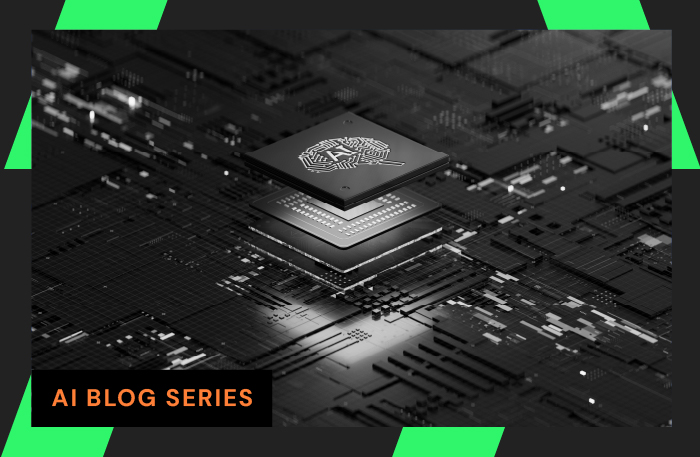
Network Performance Monitoring (NPM) is the process of capturing, inspecting, and analyzing network data to gain insights into the behavior and patterns of network traffic. An understanding of NPM is important for network professionals who are responsible for achieving the level of network performance needed for today’s enterprise. That’s why it’s no surprise that the global network performance monitoring market is projected to reach $4.2 billion by 2031, growing at a CAGR of 7.1% from 2022 to 2031. Some common use cases for NPM include the following:
Performance Monitoring: Network administrators use traffic analysis to assess network performance, identify bottlenecks, and optimize network resources. By analyzing traffic patterns, they can detect bandwidth congestion, uncover packet loss latency issues, and optimize network configurations accordingly.
Troubleshooting and Problem Resolution: When network issues occur, analyzing network traffic helps identify the root cause of the problems. By examining traffic patterns, administrators can pinpoint faulty devices, misconfigurations, or abnormal behaviors that may be causing disruptions or network outages.
Capacity Planning: NPM provides valuable insights for capacity planning. By analyzing historical traffic patterns, administrators can estimate future resource requirements, identify peak usage periods, and make informed decisions about network upgrades and expansions.
Application Performance Monitoring: Analyzing network traffic helps monitor the performance of critical applications and services. By examining traffic related to specific applications, administrators can identify latency issues, packet loss, or performance degradation and take appropriate measures to optimize application delivery.
Why is Network Performance Monitoring Important?
The importance of NPM cannot be overstated in today’s interconnected world. Its importance will only increase given the prediction that with the rise of IOT devices by 2025, 75.44 billion connected devices will be generating a massive amount of network data making the job of the network professional even more challenging!
By examining the flow of data packets within a network, NPM helps organizations understand their network infrastructure and optimize network performance. With the increasing complexity and sophistication of modern networks, NPM has become an essential practice for network administrators.
As networks grow larger and more intricate, it becomes increasingly challenging to monitor and protect them effectively. NPM provides a comprehensive view of network activities, allowing organizations to proactively identify and respond to potential issues before they escalate. By analyzing network telemetry and flow records such as NetFlow, sFlow, J-Flow, and others, NPM solutions offer valuable insights into network behavior and facilitate rapid incident response.
Network telemetry refers to the collection, measurement, and analysis of data from network devices and infrastructure to gain insights into network performance and behavior. The following are several types of network telemetry methods used to monitor and manage networks effectively:
- SNMP (Simple Network Management Protocol): SNMP is a widely used protocol for network management and monitoring. It allows network administrators to collect and organize information about network devices, such as routers, switches, and servers. SNMP enables the monitoring of network performance, device health, and resource utilization.
- Performance Monitoring Telemetry: Performance monitoring telemetry focuses on measuring and analyzing various performance metrics of network devices and links. It includes monitoring parameters such as bandwidth utilization, latency, packet loss, jitter, and error rates. Performance monitoring telemetry helps in identifying bottlenecks, optimizing network resources, and ensuring efficient network operation.
- Endpoint Telemetry: Endpoint telemetry focuses on monitoring and collecting data from individual endpoints, such as computers, servers, or IoT devices, connected to the network. It includes information about device health, performance, software, and firmware versions.
Organizations often use a combination of telemetry types to gain comprehensive visibility into their network infrastructure, optimize performance, and detect issues.
In summary, NPM plays a crucial role in optimizing network performance. By analyzing network traffic patterns, administrators can identify bandwidth bottlenecks, optimize routing protocols, and allocate network resources more efficiently. NPM provides valuable insights into application usage, allowing organizations to prioritize critical services and ensure optimal performance for end-users. With NPM, organizations can make decisions to enhance network capacity, improve response times, and deliver a seamless user experience.
Benefits of Network Performance Monitoring
- Network Performance Optimization: By monitoring traffic patterns, bandwidth utilization, and latency, network administrators can identify bottlenecks, optimize network resources, and improve overall performance. This allows organizations to ensure efficient data transmission, minimize downtime, and deliver a better user experience.
- Capacity Planning: Analyzing network traffic provides valuable information for capacity planning. By analyzing historical traffic patterns and forecasting future growth, organizations can determine their network’s capacity requirements.
- Troubleshooting and Problem Resolution: By examining network traffic flows and identifying abnormalities or performance bottlenecks, administrators can pinpoint the root causes of problems.
- Compliance and Regulatory Requirements: Analyzing network traffic assists in meeting these compliance obligations by providing visibility into network activities, detecting policy violations, and generating audit logs and reports. This helps organizations demonstrate adherence to regulatory standards and maintain a secure and compliant environment.
Overall, network analysis provides organizations with actionable insights into their network infrastructure, optimizes performance, and ensures compliance with regulatory requirements. By leveraging this practice, organizations can proactively manage their networks, minimize risks, and improve operational efficiency.
NPM Tools
Not all tools for monitoring network traffic are alike. Generally, they can be broken down into two types: flow monitoring tools and deep packet inspection (DPI) tools.
Flow-based tools analyze network traffic by examining flow records, which are generated by network devices. A flow represents a unidirectional sequence of packets between a source and destination IP address. The advantages of flow-based tools are as follows:
- Scalability – flow-based tools are efficient in high-volume networks because they aggregate packet information into flows, reducing the amount of data that needs to be analyzed.
- Network Visibility – Flow-based tools provide an overview of network behavior.
- Anomaly Detection – Unusual traffic patterns or behaviors can be detected.
- Resource Friendly – Flow records require fewer computing resources compared to inspecting every packet individually.
Deep Packet Inspection (DPI) tools provide detailed packet-level analysis, content inspection, and protocol identification. Some advantages of DPI tools are as follows:
- Granular Visibility – DPI tools provide detailed information about network traffic, including application-layer protocols, URLs, and user activities.
- Complex Troubleshooting: DPI provides the information needed for network forensics
- Protocol Identification: DPI tools can identify and differentiate various network protocols and applications, helping enable traffic classification and policy enforcement.
The choice between these tools, or where to deploy one or the other, depends on the specific requirements of the network analysis needed.
NPM Best Practices
To effectively implement NPM solutions, certain best practices should be followed:
- Understand your network. Organizations should define clear objectives and goals for their NPM strategy, aligning it with their overall network performance and security requirements.
- Baselines for normal network behavior should be established and regularly updated to adapt to evolving network environments.
- It is essential to deploy robust NPM solutions that can handle the scale and complexity of the network, ensuring accurate and real-time analysis.
- To implement NPM effectively, organizations should ensure proper data collection, storage, and analysis processes.
- NPM should leverage robust data capture mechanisms and reliable storage infrastructure to retain network traffic data for an appropriate period.
- Aim for comprehensive, context-driven visibility. Regular monitoring, analysis, and incident response exercises should be conducted to maintain the effectiveness of NPM solutions.
Evaluating NPM Tools
When considering NPM solutions, organizations should look for features such as real-time alerting capabilities, comprehensive reporting, and advanced visualization tools. These solutions should support various network telemetry and flow record formats to accommodate diverse network architectures.
Here are some items to consider when evaluating which solution is the right one for your organization:
- Availability of flow-enabled devices: Do you have flow-enabled devices on your network capable of generating the flows required by the NPM tool? DPI tools accept raw traffic, found on every network via any managed switch, and are vendor-independent. Network switches and routers do not require any special modules or support — just traffic from a SPAN or port mirror from any managed switch.
- The data source: Flow data and packet data come from different sources, and not all NPM tools collect both. Be sure to look through your network traffic and decide which pieces are critical, and then compare capabilities against the tools to ensure everything you need is included.
- The points on the network: Be careful not to monitor too many data sources right away. Instead, be strategic in picking locations where data converges, such as internet gateways or VLANs associated with critical servers.
- Real-time data vs. historical data: Historical data is critical to analyzing past events, but some tools for monitoring network traffic don’t retain that data as time goes on. Also check whether the tool is priced based on the amount of data you want to store. Have a clear understanding of which data you care about most to find the option best suited to your needs and budget.
- Full packet capture, cost, and complexity: Some DPI tools capture and retain all packets, resulting in expensive appliances, increased storage costs, and much training/expertise to operate. Others do more of the ‘heavy lifting,’ capturing full packets but extracting only the critical detail and metadata for each protocol. This metadata extraction results in a huge data reduction but still has readable, actionable detail that’s ideal for both network and security teams.
In Conclusion
Network Performance Monitoring is an indispensable way for organizations to monitor their network availability, detect anomalies, and optimize performance. By analyzing network telemetry and flow records, NPM solutions provide valuable insights into network behavior and facilitate the optimization of network resources. When choosing an NPM solution, look for end-to-end visualization capabilities, scalability, quick flow-to-packet capability, and ease of use.
LiveAction’s LiveNX network performance monitoring and LiveWire high-speed packet capture is the network monitoring solution of choice for organizations worldwide. LiveNX network monitoring software delivers network-wide observability, advanced analytics, and comprehensive reporting so you can optimize network and application performance everywhere. LiveWire generates high-performance telemetry for network and application performance analysis and real-time for detailed troubleshooting when existing data is not enough.
A recent Forrester Consulting study demonstrated that a 153% ROI was one of many benefits for companies that deployed LiveNX and LiveWire. Get in touch to learn more about network monitoring with LiveAction.


